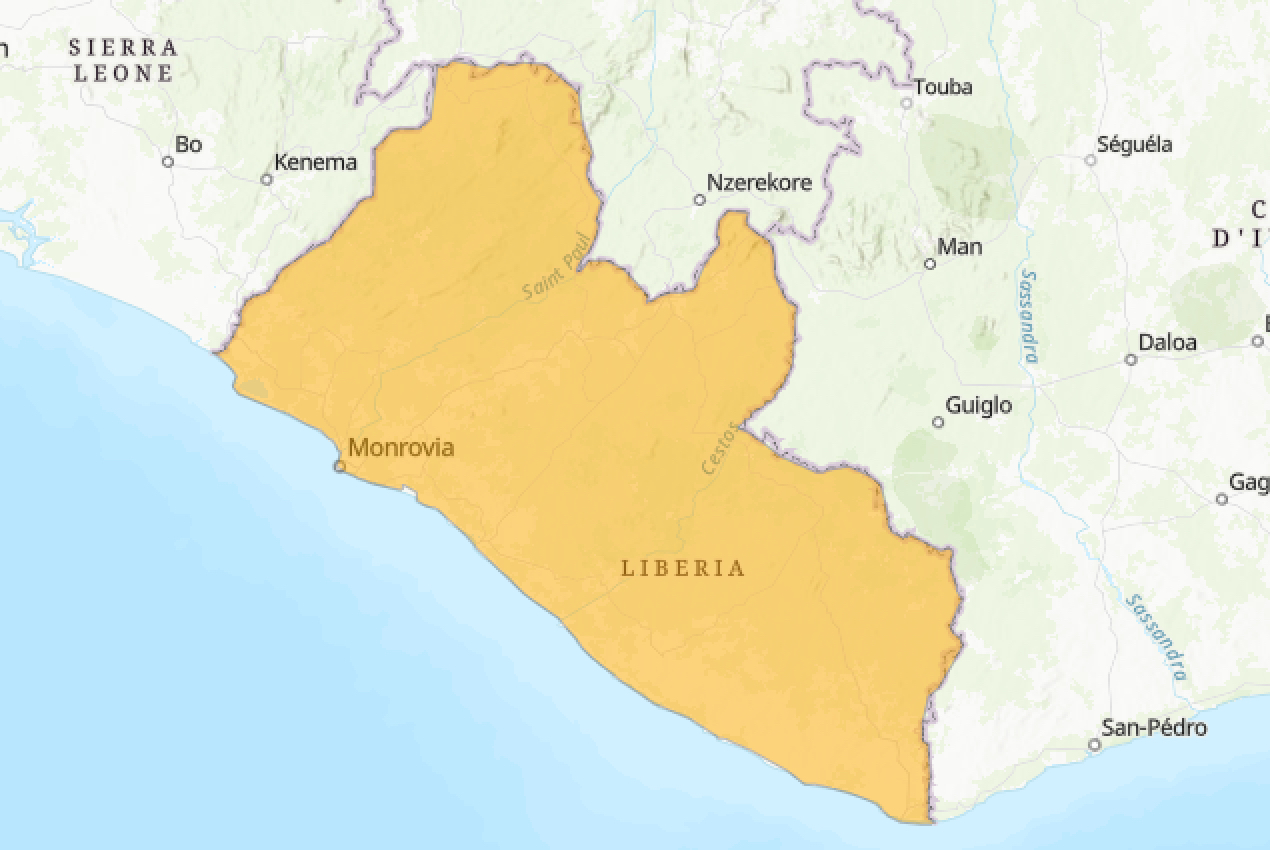Liberia has experienced decades of conflict. Despite reaching a peace agreement in 2003, the country continues to face a proliferation of weapons and ammunition on its territory. While the proper management of weapons and ammunition is high on the Liberian Ministry of Defence’s post-conflict priorities, international support is still needed to achieve these objectives.1 Unexploded ordnance, particulary in the country’s northern region, continues to pose a threat and to require clearance work.2
The African Union; the Economic Community of West African States (ECOWAS); the Regional Centre on Small Arms in the Great Lakes Region, the Horn of Africa and Bordering States (RECSA); the UN Regional Centre for Peace and Disarmament and Development in Africa (UNREC); the UN Institute for Disarmament Research (UNIDIR); the Bonn International Centre for Conflict Studies (BICC); the Mines Advisory Group (MAG); and the Multinational Small Arms and Ammunition Group (MSAG) have been working on the ground to support the through-life management of ammunition and the prevention of illicit ammunition flows, in collaboration with the Liberian Ministry of Defence. Efforts have included providing weapons and ammunition management training courses, organising physical security and stockpile management seminars to develop regional expertise in ammunition management, conducting an assessment of Liberia’s national plan on ammunition management and offering technical advice on ammunition-related questions.3
1 "Accra Peace Agreement,” Peace Accords Matrix, October 11, 2019, peaceaccords.nd.edu/accord/accra-peace-agreement; UNIDIR, Country Insight: Liberia Weapons and Ammunition Management (Geneva: UNIDIR, 2020), https://unidir.org/sites/default/files/2020-11/Liberia%20-%20WAM%20Country%20Insight.pdf.
2 GICHD, Action on Armed Violence Post-Conflict Rehabilitation and Reintegration: Liberia Case Study (Geneva: GICHD, 2012), https://www.gichd.org/fileadmin/GICHD/topics/development/ma_development-2/AVR/AVR-Liberia-case-study-Sep2012.pdf.
3 “Ammunition Management Activity Platform (A-MAP),” GICHD, 2022, https://a-map.gichd.org.
Launch the country dashboard
Further information
Accidental explosions
Since the Small Arms Survey began collecting data in 1979, no accidental explosions have been reported in Liberia.
Source: “Unplanned Explosions at Munitions Sites (UEMS) Database,” Small Arms Survey, updated December 15, 2021, https://smallarmssurvey.org/database/unplanned-explosions-munitions-sites-uems.
Cases of diversion
Some cases of diversion have been reported since 2012 in Liberia.
Table 1. Cases of diversion of arms, ammunition and explosives in Liberia since 2012
| Year | Location | Description |
| 2012 | Paynesville | The Liberia National Police retrieved another stolen UNMIL M-16 weapon. |
| 2012 | Margibi | Three men were arrested in possession of one AK-47 with 21 live bullets stolen from UNMIL stocks. |
Source: “Liberia: Police Arrest Three With 'Stolen' Unmil Arm,” AllAfrica, July 24, 2012, https://allafrica.com/stories/201207241011.html; “Liberia: In Connection With Unmil Stolen Weapons - Police Arrest Two More Suspects,” AllAfrica, July 25, 2012, https://allafrica.com/stories/201207280520.html.
Disposal
Insufficient information on the disposal of ammunition in Liberia.
Needs
To further enhance safe and secure ammunition management, the following needs have been identified for Liberia:
- Development or refinement of standards and procedures on stockpile management; and
- Capacity development for the destruction of surplus stockpile.
Source: Liberia, National Report on the Implementation of the Programme of Action on Small Arms and Light Weapons (PoA) and the International Tracing Instrument (ITI) (New York: Permanent Mission of Liberia to the UN, 2020), https://unoda-poa.s3.amazonaws.com/reports/LBR-English-1037-SUBMITTED.pdf.



